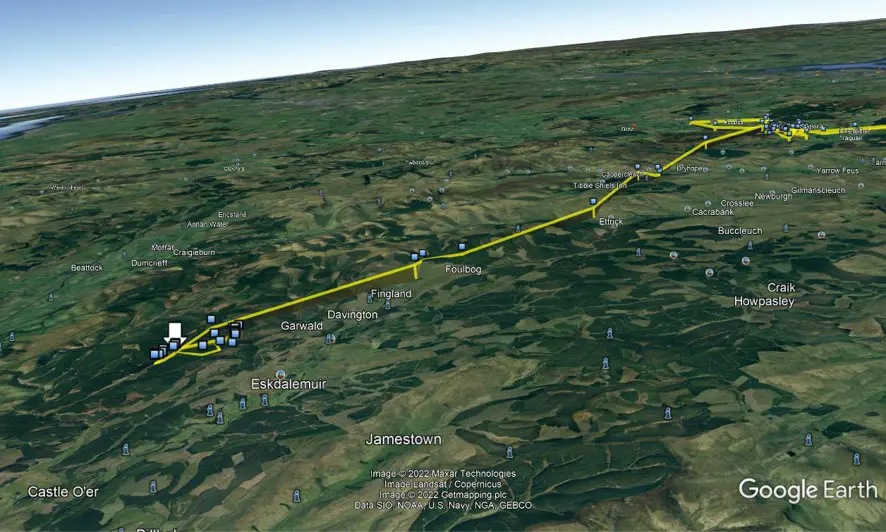Osprey news from around the Tweed Valley
- Tweed Valley Osprey Project Co-ordinator, Di Bennett, brings us the latest update from the nest.
Update 26 August: All three juveniles start their migration
As of Friday 26 August, all three juveniles have left the nest heading south. We've never seen all chicks leave at the same time, but they have in this case all left on Thursday. Currently (Friday morning):
- Kirk is at Loch Esk, near Eskdalemuir
- Tweed is at the Welsh borders, near Whitchurch
- Glen is around Kendal in Cumbria



Earlier this week...
The young ospreys from the main nest have spent most of the week staying close to the nest area. Tweed (706) has been the most stay-at-home of the youngsters and hasn’t ventured far in the past week. Kirk (707) has mostly stayed close to the nest area but has had three day-trips to explore. On 19 August he went to Caberston Forest to the north of Walkerburn and was there at 12.30pm before heading off to the west back towards Peebles. On 20 August he crossed the River Tweed and flew over the Peebles Hydro at 3pm and on 21 August he took a trip out to the Glen House Estate and was there about 2.20pm. The next two days after that he stayed at the main nest area for most of the time. Glen (708) was this week’s most adventurous bird as he crossed the three valleys, Tweed, Yarrow and into the Ettrick, on 19 August and passed over Bowhill House before returning to the nest area where he has remained there since.

706, Tweed with a fish that his dad, PW3 gave to him
Their dad PW3 is still working really hard to bring fish for his three sons. He is delivering them to the nest so it makes sense for the young ospreys to be nearby when they are hungry. We can see on camera when the young ones are hanging around, squawking and calling loudly when they are waiting for a fish to be brought in. The birds and are being given whole fish to handle so that they can feed themselves.
In the whole of the Tweed Valley Osprey Project Area there were thirteen occupied nest sites this year, and nine of the sites were visited by the Environment team to ring the young ospreys. Of the four sites where the chicks were not ringed, two of the sites were new nest sites and the ospreys had built their own nest. It has been a productive year in terms of the number of ospreys raised in the area with a total of 32 ospreys reaching fledging stage.
This brings the number of ospreys raised in the Tweed Valley Osprey Project area since the start of the project to a total of 268. This year, 22 osprey juveniles were ringed at 9 of the nest sites. All were fitted with blue darvic rings and BTO rings as well. The ring numbers used were as follows on the main nest: 706, 707, 708 and the birds named as Tweed, Kirk and Glen. They also have trackers. On the back up nest, the three chicks were ringed with darvics 698, 699 and 719. The west of Peebles nest chicks were fitted with rings 720, 721 and 722.

Chick 719

West of Peebles chicks 720, 721, 722
The single chick at Ancrum is darvic 688. Another upper Tweed Valley single chick was ringed with darvic 723. One of the nests with a brood of two in the south of the area had darvics 727 and 728.

727 and 728 from a brood of two

The remaining three nests which were visited to ring the ospreys each had a brood of three and the darvics used were as follows (724, 725 and 726), (692, 693, 694), and (695, 696 and 697). This left 10 un-ringed ospreys from the remaining 4 nest sites where each had a brood of three apart from one nest with a single chick in it.
All of these young ospreys will be flying around this area now. Most of their mothers will have already left on migration and they will be relying on their dads to feed them and keep on bringing fish until they leave to migrate. There will only be a couple of weeks left now before they will make their way out into the wider world and into the unknown. We just hope that they have safe flights and manage to navigate their way through the hazards that they face on their travels.
Video highlights
Keep an eye on our 2022 highlights YouTube playlist where we're uploading our favourite clips from the nest.